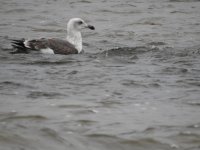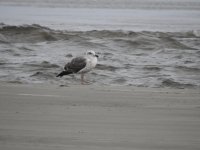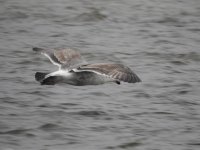


The photos were taken on January 6th 2021. I used IBirdPro and Merlin Photo ID and both Apps identified the gull in the photos as a Lesser Black-backed Gull. I also referred to Seabirds by Peter Harrison and Gulls Simplified by Dunne and Karlson. Although, the LBBG seems to be a match, I'm not certain because it is an immature bird (1.5 years old?). This species would be considered rare on the Oregon coast, therefore I would like it confirmed by others with the expertise to do so. So any info you could provide to confirm or dismiss the identification would be appreciated. Thank you for your time : )




